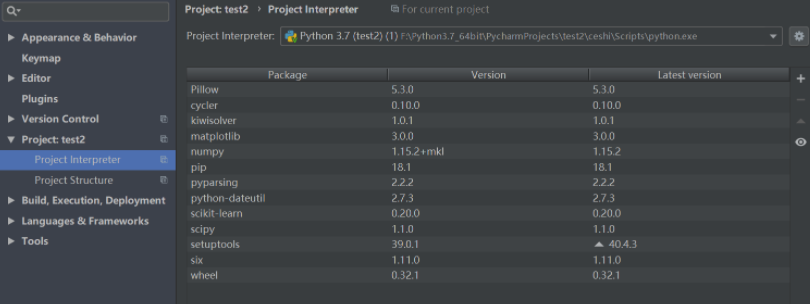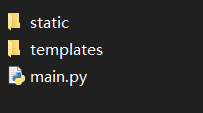一、前期准备
同步python库
将已有的python安装第三方库直接配置给pycharm

二、写小网页
配置文件夹

目录结构参考:flask——目录参考
static 存放css样式,图片等数据
static目录:
如其名,静态文件夹,里面防止一些静态文件,比如js、css、以及图片
templates目录:
中文为模板,里面放置html文件
venv目录:
python工程的虚拟环境,里面只需要了解一下,Lib-site-packages这个目录里面放置的当前工程需要的一些供调用的库。工程内下载的库也都在这里面。
四步骤:
- 引入Flask类
- 创建Flask对象
- 编写主程序
- 路由
源代码:
from flask import Flask
app = Flask(__name__)
# __name__是类,区别于app这个实例,app继承类的所有属性和方法
@app.route('/')
def index():
return ("<h1>Hi,Flask!<h1>")
if "__main__" == __name__:
app.run(port="5013")
# run里面可改为其他的字符串数字,默认5000

三、提取视频帧
from flask import Flask, render_template
import os
import cv2
os.chdir(r'C:\Users\ouoli\PycharmProjects\pythonProject1\flask')
app = Flask(__name__)
def genFrame():
v_path = 'static/ghz.mp4'
image_save = 'static/pic'
if not (os.path.exists(image_save)):
os.mkdir(image_save)
cap = cv2.VideoCapture(v_path)
fc = cap.get(cv2.CAP_PROP_FRAME_COUNT)
for i in range(int(fc)):
_, img = cap.read()
cv2.imwrite('static/pic/image{}.jpg'.format(i), img)
@app.route('/')
def index():
genFrame()
return render_template('index.html')
if "__main__" == __name__:
app.run(port='5020')
<!DOCTYPE html>
<html lang="en">
<head>
<meta charset="UTF-8">
<title>Title</title>
</head>
<body>
视频分镜
<br>
<video width="180" height="320" controls autoplay>
<source src="static/ghz.mp4" type="video/mp4">
<object data="static/ghz.mp4" width="180" height="320">
<embed width="180" height="320" src="static/ghz.mp4">
</object>
</video>
</body>
</html>

在相应的pic文件夹下也有单帧的图片。

四、视频分镜处理
1、基于哈希
python代码:
扫描二维码关注公众号,回复:
13332270 查看本文章


from flask import Flask,render_template
import cv2
import os
app=Flask(__name__)
def aHash(img):
img=cv2.resize(img,(8,8))
gray = cv2.cvtColor(img, cv2.COLOR_BGR2GRAY)
s = 0
hash_str = ""
for i in range(8):
for j in range(8):
s = s + gray[i, j]
avg = s / 64
for i in range(8):
for j in range(8):
if gray[i, j] > avg:
hash_str=hash_str+"1"
else:
hash_str=hash_str+"0"
return hash_str
def cmpHash(hash1,hash2):
n=0
if len(hash1)!=len(hash2):
return -1
for i in range(len(hash1)):
if hash1[i]!=hash2[i]:
n=n+1
return n
def genFrame():
v_path='static/stereotype3.mp4'
image_save='static/shot'
if not(os.path.exists(image_save)):
os.mkdir(image_save)
cap=cv2.VideoCapture(v_path)
fc=cap.get(cv2.CAP_PROP_FRAME_COUNT)
#NEW!!!
_,img1=cap.read()
cv2.imwrite('static/shot/image{}.jpg'.format(0),img1)
for i in range(int(fc)-1):
_,img2=cap.read()
hash1=aHash(img1)
hash2=aHash(img2)
n=cmpHash(hash1,hash2)
if n>25:
cv2.imwrite('static/shot/image{}.jpg'.format(i),img2)
img1 = img2
@app.route('/')
def index():
genFrame()
path="static/shot"
filename=os.listdir(path)
filename.sort(key=lambda x: int(x[5:-4]))#能让最后显示的图片顺序体现先后顺序
framecount=len(filename)
return render_template('index.html',filename=filename,framecount=framecount)
if "__main__"==__name__:
app.run(port="5008")
html代码:
<!DOCTYPE html>
<html lang="en">
<head>
<meta charset="UTF-8">
<title>Flask分镜</title>
</head>
<body>
视频分镜<br>
<video width="640" height="480" controls autoplay>
<source src="static/ghz.mp4" type="video/mp4">
<object data="static/ghz.mp4" width="640" height="480">
<embed width="640" height="480" src="static/ghz.mp4">
</object>
</video>
<br>
帧数:{
{framecount}}<br>
{% for i in filename %}
<img height="40" src="static/pic/{
{i}}" />
{
{filename[i]}}
{% endfor %}
</body>
</html>
2、基于直方图
py代码:
from flask import Flask,render_template
import cv2
import os
app=Flask(__name__)
# 通过得到RGB每个通道的直方图来计算相似度
def classify_hist_with_split(image1, image2, size=(256, 256)):
image1 = cv2.resize(image1, size)
image2 = cv2.resize(image2, size)
sub_image1 = cv2.split(image1)
sub_image2 = cv2.split(image2)
sub_data = 0
for im1, im2 in zip(sub_image1, sub_image2):
sub_data += calculate(im1, im2)
sub_data = sub_data / 3
return sub_data
def calculate(image1, image2):
hist1 = cv2.calcHist([image1], [0], None, [256], [0.0, 255.0])
hist2 = cv2.calcHist([image2], [0], None, [256], [0.0, 255.0])
degree = 0
for i in range(len(hist1)):
if hist1[i] != hist2[i]:
degree = degree + (1 - abs(hist1[i] - hist2[i]) / max(hist1[i], hist2[i]))
else:
degree = degree + 1
degree = degree / len(hist1)
return degree
def genFrame():
v_path='static/stereotype3.mp4'
image_save='static/pic'
if not(os.path.exists(image_save)):
os.mkdir(image_save)
cap=cv2.VideoCapture(v_path)
fc=cap.get(cv2.CAP_PROP_FRAME_COUNT)
_,img1=cap.read()
cv2.imwrite('static/pic/image{}.jpg'.format(0),img1)
for i in range(int(fc)-1):
_,img2=cap.read()
n=classify_hist_with_split(img1,img2)
if (n<0.5):
cv2.imwrite('static/pic/image{}.jpg'.format(i), img2)
img1 = img2
@app.route('/')
def HIST():
genFrame()
path="static/pic"
filename=os.listdir(path)
filename.sort(key=lambda x: int(x[5:-4]))
framecount=len(filename)
return render_template('index.html',filename=filename,framecount=framecount)
if "__main__"==__name__:
app.run(port="5008")
html代码:
<!DOCTYPE html>
<html lang="en">
<head>
<meta charset="UTF-8">
<title>Flask分镜</title>
</head>
<body>
视频分镜<br>
<video width="640" height="480" controls autoplay>
<source src="static/ghz.mp4" type="video/mp4">
<object data="static/ghz.mp4" width="640" height="480">
<embed width="640" height="480" src="static/ghz.mp4">
</object>
</video>
<br>
帧数:{
{framecount}}<br>
{% for i in filename %}
<img height="40" src="static/pic/{
{i}}" />
{
{filename[i]}}
{% endfor %}
</body>
</html></html>

